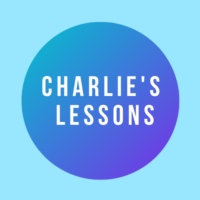Hello and welcome to part one in a new series of blog posts on practical and fun speaking activities for ESL student classes.
Today, we will not be focusing on the form or structure of the Present Simple tense. Instead, we will focus on how we can use the tense, its many functions and how we can engage students with this through some fun activities.
All of these speaking activities for beginners are going to promote Present Simple functions. So eventually, your students will learn exactly when to use this particular tense and when not to use it.
Speaking Activity 1: Agendas

One of my favourite speaking activities for beginners to practice the Present Simple functions is to get them to write their agenda for the week ahead. In other words, the things that they usually do every week. So, I give each student a worksheet for either Monday to Friday, or Monday to Sunday.
I then get them to write in the spaces what it is that they do on each of these days. Normally, I will exclude school activities from this. So, instead, they are thinking about fun activities after school. When they have finished writing their week’s agenda, I ask them to compare their agendas with the other students.
Firstly, we are looking for students to find things that they have in common. Or, we can ask them to find out three things that they have in common with another student’s agenda to share with the class.
If what the students do in their free time feels a bit boring or uninspiring (as it often is) then you can get them to pick famous people, celebrities or sports stars and ask them to find out about their routines instead. Here you can ask students to collate online material about the routines of their chosen people.
If you don’t have the technology available in your classroom, then before class you can print some fact sheets about certain celebrities and hand them out. So, for example, one of my students Pedro is a big fan of Shakira and he told us about how Shakira goes to singing practice on Mondays, goes to watch Barcelona play football on Wednesdays, and so forth.
If you are doing these activities for homework or remote learning, then why not check out my other blog on collaborative learning activities here?
When you teach English, it’s very common to run conversation classes for students, that’s why you should check out this post here.
Speaking Activity 2: Jobs & Professions

So, when we talk about general facts using the Present Simple another activity that I like to do with my students is to discuss jobs and professions. I like to ask my students to come up with a list of popular professions and jobs. I then ask the student to choose and job and describe what a person needs to be or do for that job.
So, an example could be a footballer who needs to go to football training every day. They need to eat well and stay in shape. Or, a politician needs to steal and lie. Or a teacher like me needs to be funny, caring, organized, inspiring, enthusiastic, hard-working, vaccinated, on time, underpaid, and so forth. (Only joking!)
Speaking Activity 3: Cultural Norms & Stereotypes

Another interesting talking point using the Present Simple is to talk about cultural norms or stereotypes. So, for example – English people come across as cold, they drink tea, they love the Queen or they like to eat fish and chips. Or, that Spanish people love sleeping, bullfights and dancing the flamenco before their next siesta.
Speaking Activity 4: Descriptions
This next activity is very similar to the popular board game Guess Who? What I do is either on the board or the projector, I give the students a set of vocabulary. I can either then dictate these words, or put them on the board for the students to copy. Just make sure you let the students know which vocabulary is used for the hair, the face, size, or your opinion.
Now, there are two ways that we can do this:
Version 1
We can either ask our students to write a description of one of their classmates. Or, we can use an avatar maker to create a series of avatars to put onto our board. We can then ask our students individually to describe each one of our avatars or chosen students and have our class listen. The teacher then has to guess which avatar or student the person speaking is describing.
Version 2
The second activity involves us the teacher taking random objects from our students and placing them into a bag. The students then place our hands in the bag and describe what they feel. For example, it feels small, or it feels soft, or it feels furry. Once they have finished describing the object, we can invite our students to come up with the front and pull the object out of the bag. If our students are struggling, we can have the students see what objects are going into the bag before describing them.
This only volume 1, check out the other 2 volumes here and here.
Speaking Activity 5: Differentiating Objects

The final practical and fun speaking activity that I use for engaging my students with the Present Simple is to ask them to describe the differences between particular objects. For younger students, we can make it more obvious – so you may use an example such as a lake, ocean or river, and the mountains. For older students, we can advance the difficulty by making the differences a bit more subtle. Spanish wine, Italian wine, German wine and French wine for example are pretty difficult. But the students simply need to discuss the differences between the objects.
Bonus Speaking Activity: Holiday Itinerary Planning
One of the less commonly known functions of the Present Simple is to talk about future events. This function works very well with an activity whereby we can ask students to put together itineraries for their dream holidays.
Or, you can imagine that one group of students is a famous rock band and that they are speaking to their tour organizer. Their imaginary tour organizer is going through the itinerary for a three-month tour of the USA.
The tour manager begins with their Heathrow departure, arriving at LA airport on 5th September at 10 am. Their first gig is at the Lakers Stadium at 10 pm and their hotel is the Grand Royal, and so forth.
Final Thoughts
So there we have a series practical and fun speaking activities that encourage our students to engage with the Present Simple in fun ways. One thing that we can do when we get to the end of a class where we practice the functions of the Present Simple is to give students an exit ticket. The exit ticket will ask the students if they feel more comfortable and more confident doing these things.
Thank you for reading today’s blog post and I look forward to seeing you for the second part of this series on teaching grammar in the classroom. If you enjoyed this post, please remember to like, comment, share and subscribe!
